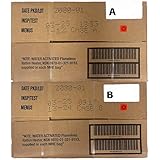Understanding the Basics of Drone Technology
What is a Drone?
First off, let’s get a grip on what a drone actually is. Drones, or UAVs (Unmanned Aerial Vehicles) as the cool kids call them, are aircraft without a human pilot onboard. These little machines can be controlled remotely, or they can fly autonomously based on pre-programmed flight plans. I’ve always been fascinated by how they can zip around and capture stunning footage from the sky!
In emergency scenarios, their potential is astronomical. They’re equipped with cameras and can cover large areas much faster than ground teams. Seriously, think about the last time you found yourself stuck in traffic – drones don’t have that problem! Instead, they glide over obstacles, giving first responders a bird’s-eye view.
With technology evolving, today’s drones can do more than pan and scan; they can have infrared and thermal imaging capabilities, making them essential for search and rescue operations. I remember one case where thermal imaging helped locate a missing child in a dense forest – it was a game-changer!
Identifying Emergency Situations
Types of Emergencies
Now, a huge part of using drones effectively is understanding when to deploy them. Emergencies come in various shapes and forms. Fires, floods, missing persons, and even major accidents on highways can warrant drone use. I’ve seen firsthand how each situation calls for a unique approach.
Take natural disasters like hurricanes or tornadoes, for example. Drones can assist in assessing damage more quickly than traditional methods. They can fly over impacted areas, gather data, and send it directly to the decision-makers on the ground. It’s incredibly efficient and saves precious time, which in emergencies can mean everything.
Then there’s the realm of public safety. Drones can fly at a moment’s notice to gather and relay information during large public events, ensuring that everyone is safe. I’ve been involved in a few events where drones helped monitor crowds and communicated urgent updates via live feeds. It’s a brilliant way to keep things organized!
Equipping Your Drone for Surveillance
Choosing the Right Drone
Alright, so now you’re probably wondering which drone is best for emergency work. The truth is, it all depends on what your specific needs are. Some folks might need a drone primarily for high-resolution video, while others might prioritize thermal imaging. In my experience, it’s best to have a drone that can adapt to various situations.
When selecting a drone, consider factors such as flight time, range, and durability. You want something that can handle the demands of emergency work without crashing after a short flight. I’ve had some great experiences with rugged drones that weathered a storm or two!
== > What if ... Get a FREE Subscription to PREPARE
Don’t forget about licensing and regulations in your area. Depending on where you live, you might need special permits to use drones for professional purposes. It’s crucial to do your homework beforehand to avoid any legal hiccups that might slow down your response time.
Developing a Response Plan
Creating an Efficient Workflow
Once you’ve got your gear sorted out, the next big piece of the puzzle is your response plan. Wingin’ it isn’t an option during emergencies. A well-thought-out plan can save lives. In my experience, communication is key. Make sure everyone knows who’s doing what and how the drone fits into the picture.
Get Preparedness and Self-Reliance Tips. Subscribe Now!
Establish clear protocols for when the drone is activated. Who’s in charge of it? Who interprets the data? Having these details ironed out beforehand can be the difference between confusion and successful operations when things heat up.
Run through drills to practice using the drone in real-life scenarios. This allows the team to familiarize themselves with the technology and refine their response strategies. Trust me, when you practice, you’re way more prepared when the real deal happens!
Evaluating and Utilizing Drone Data
Interpreting the Information Gathered
So, we’ve got a drone buzzing around collecting data—now what? It’s time to sift through all that information. Interpreting the aerial footage and data can be daunting, but here’s where teamwork shines. From my experience, having designated analysts who know what to look for is invaluable.
Data collected can support decision-making processes. For instance, seeing which routes are blocked after a flood can help guide emergency vehicles. Analyzing this intel in real time allows for quicker, more informed decisions. It’s crazy how much faster responses can be when you’re armed with the right info.
Don’t forget to share this intel! Make sure everyone involved has access to the drone’s findings. Collaboration is critical; after all, you’re all working towards the same goal—to keep people safe! I’ve been part of situations where data-sharing sped up whole operations enormously.
Frequently Asked Questions
1. What types of emergencies can drones be used for?
Drones are incredibly versatile and can be used for various emergencies, including natural disasters like floods and hurricanes, search and rescue operations for missing persons, and monitoring large public events for safety. They provide real-time data and coverage that’s hard to achieve otherwise.
2. How do I choose the right drone for emergency use?
When selecting a drone, consider factors such as flight time, range, payload capacity (like cameras and sensors), and durability. It’s best to choose a model that fits your specific needs and can adapt to different scenarios. Always do a bit of research before making a purchase!
3. Do I need special permits to operate a drone during emergencies?
Yes, depending on your location, you may need to comply with local regulations and obtain specific permits. It’s crucial to check local laws to ensure you’re operating within the legal framework and to avoid any unnecessary delays during emergencies.
4. How can I train my team to use drones effectively?
The best approach is to conduct regular training sessions that include both theoretical and hands-on practice. Create realistic emergency scenarios for your team to respond to. Familiarizing everyone with the drone and its capabilities can significantly improve your team’s effectiveness during actual emergencies.
5. How can drone data improve emergency response efforts?
Drone data provides real-time intel that helps teams make informed decisions quickly. It can highlight problem areas like blocked routes or hazardous zones, allowing emergency responders to strategize effectively. The speed and quality of the data collected can shorten response times dramatically.
Get Preparedness and Self-Reliance Tips. Subscribe Now!
Related Content
- The Ultimate Guide to 2025 Preparedness Supplies List: 10 Effective Tips
- Why should I consider self-reliant living as a long-term strategy?
- 15 Essential Skills Every Prepper Must Master Before 2025
- Is it necessary to prepare for multiple types of disasters?
- Best Food Storage Methods for Crisis Situations






